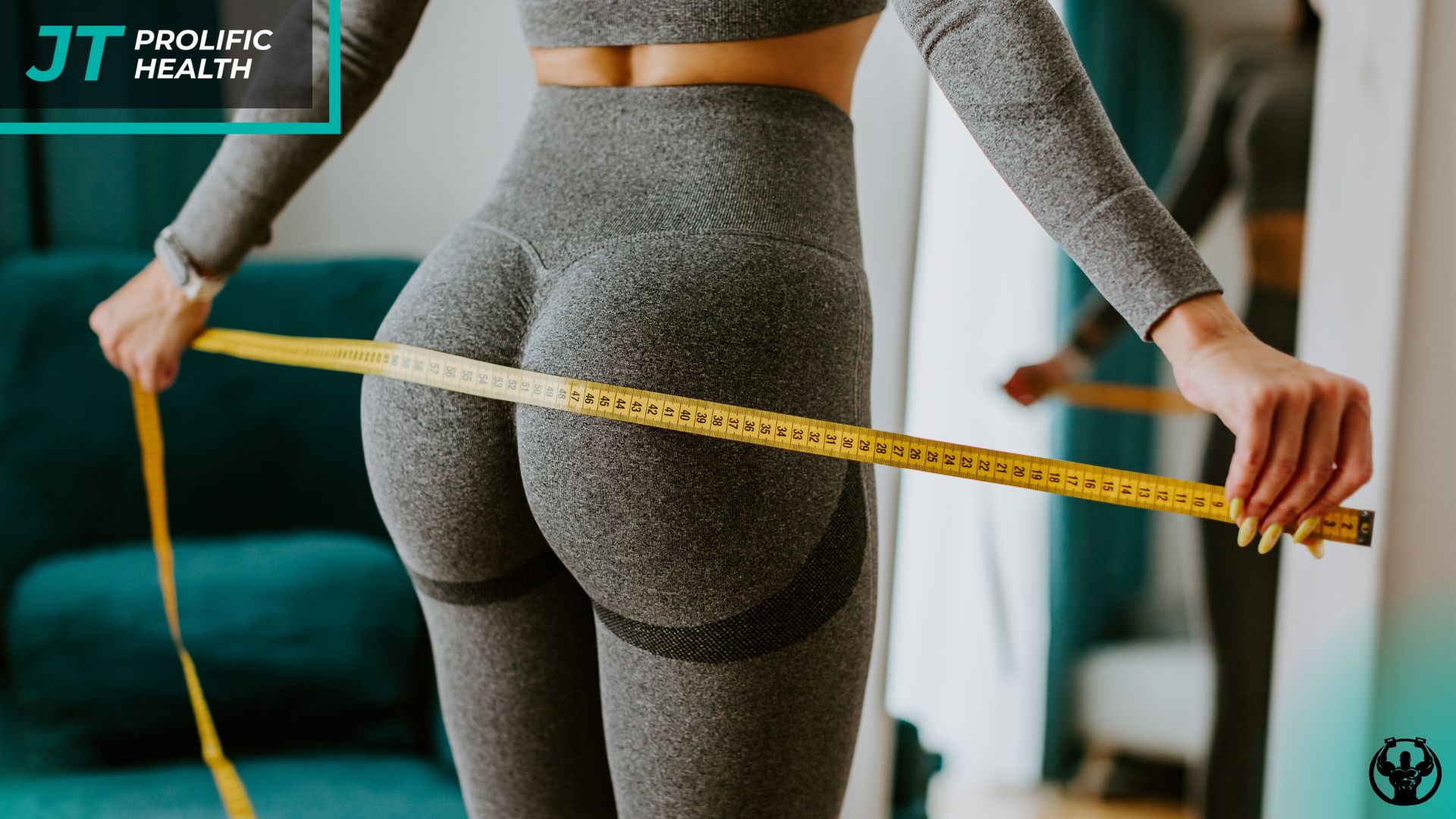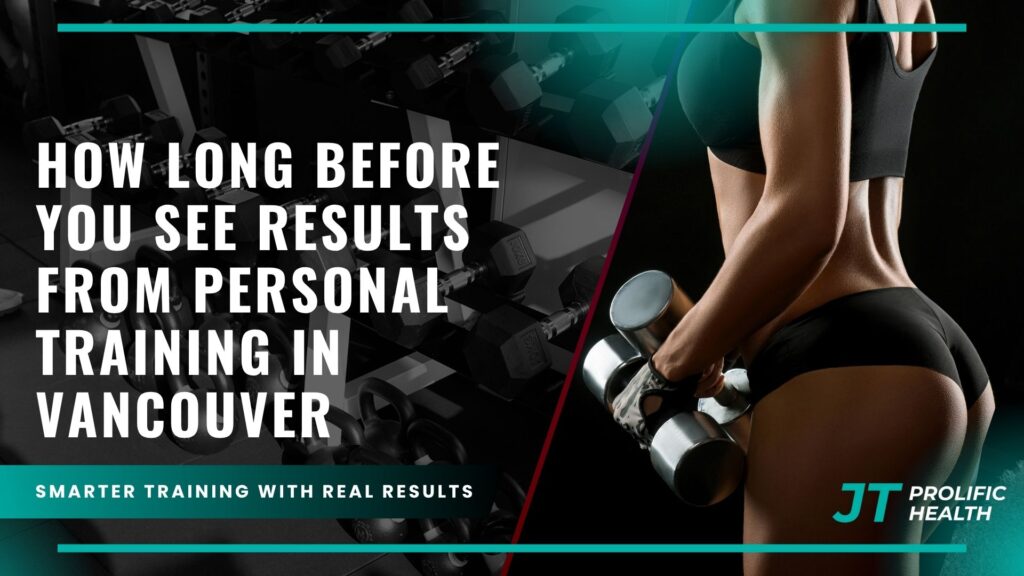When you invest in personal training in Vancouver, one of the most common questions you’ll find yourself asking is how long it will take to see meaningful results. This anticipation is completely natural – after all, you’re making a significant commitment of time, energy, and financial resources toward improving your health and fitness. Understanding realistic timelines for seeing results can help you maintain motivation, set appropriate expectations, and stay committed to your fitness journey even when progress feels slow.
The truth about seeing results from personal training is more nuanced than many people expect. While fitness marketing often promises dramatic transformations in unrealistic timeframes, the reality is that meaningful, lasting changes happen gradually and depend on numerous factors unique to your situation. Your starting fitness level, consistency with sessions, nutrition habits, sleep quality, stress levels, and genetic factors all play crucial roles in determining how quickly you’ll notice improvements.
Vancouver’s fitness landscape offers exceptional opportunities for personal training, with experienced professionals who understand that sustainable results require patience and consistency. The city’s health-conscious culture and abundance of qualified trainers means you have access to expertise that can help optimize your timeline for seeing results. However, it’s important to understand that there’s no universal timeline that applies to everyone – your journey will be uniquely yours.
Most people begin to notice some changes within the first few weeks of consistent personal training, though these initial improvements are often related to energy levels, sleep quality, and overall mood rather than dramatic physical transformations. The psychological benefits of regular exercise and professional guidance often manifest before significant physical changes become apparent, which is why many clients report feeling better long before they see major visual differences.
Setting realistic expectations from the beginning of your personal training journey is crucial for long-term success. Understanding the typical timeline for different types of results – from improved strength and endurance to visible body composition changes – can help you celebrate small victories along the way and maintain motivation during periods when progress feels less obvious. This knowledge also helps you work more effectively with your trainer to set achievable short-term and long-term goals that keep you engaged and committed to the process.
Key Takeaways
For additional context, see this comprehensive guide.
- Initial improvements typically appear within 2-4 weeks of consistent training, primarily in energy levels, sleep quality, mood, and basic strength gains rather than dramatic physical transformations
- Visible body composition changes usually become noticeable after 6-8 weeks of regular sessions combined with proper nutrition, though this timeline varies significantly based on individual factors
- Significant strength gains often occur within 4-6 weeks as your nervous system adapts to new movement patterns and your muscles begin responding to progressive overload
- Cardiovascular improvements can be felt within 3-4 weeks as your heart becomes more efficient and your endurance capacity increases during daily activities
- Consistency is the most critical factor determining how quickly you see results – sporadic training sessions will significantly delay progress regardless of their intensity
- Nutrition plays an equally important role as exercise in determining your timeline for results, with poor dietary habits potentially negating much of your training progress
- Individual factors heavily influence timelines including age, starting fitness level, genetics, stress levels, sleep quality, and any underlying health conditions
- Mental and emotional benefits often appear first before physical changes become apparent, including improved confidence, better stress management, and enhanced overall well-being
- Plateau periods are normal and expected in any fitness journey, requiring program adjustments and patience to push through to continued progress
- Long-term sustainable results typically require 3-6 months of consistent training to establish lasting habits and achieve significant body composition changes
Understanding the Timeline for Personal Training Results

For additional context, see detailed information on this topic.
The journey of seeing results from personal training follows a predictable pattern, though the exact timing varies considerably from person to person. Understanding this general timeline can help you recognize progress even when changes feel subtle or gradual. Most fitness professionals break down the results timeline into several distinct phases, each characterized by different types of improvements and adaptations.
During the first two weeks of personal training, your body begins adapting to new movement patterns and exercise stimuli. While dramatic physical changes aren’t visible yet, many people report improved energy levels, better sleep quality, and enhanced mood. These early benefits occur because exercise stimulates the release of endorphins and other beneficial hormones while beginning to improve circulation and cardiovascular function. Your trainer will focus on teaching proper form, establishing movement patterns, and gradually increasing exercise intensity.
The 3-6 week period typically brings the first noticeable strength gains and improved exercise tolerance. You’ll likely find that exercises that initially felt challenging become more manageable, and you may notice improved posture and stability in daily activities. This phase represents your nervous system becoming more efficient at recruiting muscle fibers and coordinating movement patterns. Many clients report feeling more confident in their physical abilities during this timeframe.
Between 6-12 weeks, most people begin seeing visible changes in body composition, muscle tone, and overall physique. This is when the combination of consistent training and proper nutrition typically produces noticeable results that others may comment on. Your clothes may fit differently, and you’ll likely see improvements in strength, endurance, and flexibility measurements. This phase often provides significant motivation as the visual confirmation of your hard work becomes apparent.
For those working with experienced trainers who understand the unique challenges of maintaining consistency, the timeline for results can be optimized through strategic program design and lifestyle modifications that support your training efforts.
Factors That Influence How Quickly You See Results


For additional context, see our in-depth resource.
Your individual timeline for seeing results from personal training depends on numerous interconnected factors, many of which are within your control. Understanding these variables can help you optimize your approach and set realistic expectations based on your specific circumstances. The most successful clients are those who recognize that results come from the combination of multiple factors working together rather than training alone.
Your starting fitness level significantly impacts how quickly you’ll see improvements. Individuals who are new to exercise or returning after a long break often see rapid initial gains as their bodies respond enthusiastically to the new stimulus. Conversely, those who already maintain some level of fitness may experience slower but steady progress as their bodies adapt to more advanced training protocols. This doesn’t mean experienced exercisers won’t see results – they simply require more sophisticated programming to continue progressing.
Consistency with your training schedule is perhaps the most crucial factor determining your results timeline. Attending sessions sporadically or frequently canceling appointments will significantly delay progress regardless of how intense your workouts are when you do attend. Your body needs regular, progressive stimulus to adapt and improve. Most successful clients train 2-3 times per week with their personal trainer while incorporating additional activity on their own.
Nutrition quality and consistency play an equally important role as exercise in determining your results timeline. You cannot out-train a poor diet, and inadequate nutrition can significantly slow your progress toward body composition goals. Your trainer should provide guidance on nutrition strategies that support your training, though some clients benefit from working with registered dietitians for more comprehensive nutritional support.
Sleep quality and quantity directly impact your body’s ability to recover from training sessions and adapt to new stimuli. Poor sleep habits can slow muscle recovery, increase cortisol levels, and reduce your energy for training sessions. Most adults need 7-9 hours of quality sleep per night to support optimal training adaptations and results.
Stress levels and overall lifestyle factors also influence your results timeline. Chronic stress elevates cortisol levels, which can interfere with muscle building, fat loss, and recovery processes. Comprehensive lifestyle modifications often prove just as important as the exercise program itself for achieving optimal results.
Physical Changes You Can Expect and When


Understanding the specific types of physical changes you can expect and their typical timelines helps you recognize progress even when improvements feel gradual. Different physiological adaptations occur at different rates, and being aware of this progression can help you celebrate milestones along your journey and maintain motivation during periods when progress feels less obvious.
Strength improvements typically appear first, often within 2-4 weeks of consistent training. These initial gains primarily result from neuromuscular adaptations – your nervous system becoming more efficient at recruiting muscle fibers and coordinating movement patterns. You’ll notice that exercises that initially felt challenging become more manageable, and you can lift heavier weights or perform more repetitions. This phase provides excellent motivation as you can clearly measure progress through increased performance.
Cardiovascular improvements usually become noticeable within 3-6 weeks of regular training. You’ll find that climbing stairs doesn’t leave you breathless, you can walk longer distances without fatigue, and your resting heart rate may decrease. These adaptations occur as your heart becomes more efficient at pumping blood and your muscles become better at utilizing oxygen. Many clients report having more energy for daily activities during this timeframe.
Muscle tone and definition typically become visible after 6-8 weeks of consistent training combined with appropriate nutrition. This timeline can vary significantly based on your starting body composition, genetics, and adherence to nutritional recommendations. Some areas of the body respond more quickly than others – many people notice improvements in their arms and shoulders before seeing changes in their midsection or lower body.
Significant body composition changes – substantial fat loss or muscle gain – usually require 8-12 weeks or longer to become clearly apparent. These changes represent actual tissue remodeling rather than just improved muscle tone or reduced bloating. The timeline for body composition changes depends heavily on your nutrition consistency, training frequency, and individual metabolic factors.
Flexibility and mobility improvements often occur gradually throughout your training journey, with noticeable improvements typically appearing after 4-6 weeks of consistent work. These changes may be subtle but can significantly impact your daily life quality, reducing aches and pains while improving your ability to perform both exercise and daily activities with better form and less discomfort.
For those recovering from injuries or dealing with physical limitations, specialized approaches to training may alter these typical timelines, requiring patience and modified expectations while still achieving meaningful improvements in function and strength.
Mental and Emotional Benefits Timeline
While much attention focuses on physical changes from personal training, the mental and emotional benefits often appear first and can be equally transformative. Understanding this psychological timeline helps you appreciate the full value of your investment in personal training, especially during periods when physical changes feel slow or less apparent. These mental health benefits often provide the motivation needed to maintain consistency until physical results become more obvious.
Improved mood and energy levels typically appear within the first 1-2 weeks of consistent training. Exercise stimulates the release of endorphins, serotonin, and other neurotransmitters that naturally enhance mood and reduce feelings of stress or anxiety. Many clients report feeling more positive and energetic throughout their day, even after just a few training sessions. This immediate benefit often surprises people who expected only long-term physical changes.
Enhanced sleep quality usually improves within 2-3 weeks of regular exercise. Physical activity helps regulate circadian rhythms, reduces stress hormones, and creates the physical fatigue that promotes deeper, more restorative sleep. Better sleep then creates a positive cycle, providing more energy for training sessions and supporting the recovery processes that drive physical adaptations.
Increased confidence and self-efficacy often develop within 3-4 weeks as you master new exercises, see strength improvements, and establish a consistent routine. Successfully completing challenging workouts and achieving small fitness milestones builds confidence that extends beyond the gym into other areas of life. Many clients report feeling more capable of tackling challenges at work or in personal relationships.
Stress management improvements typically become apparent after 4-6 weeks of consistent training. Regular exercise provides a healthy outlet for stress and teaches your body to recover more efficiently from stressful situations. You may notice that situations that previously felt overwhelming become more manageable, and you develop better coping strategies for daily stressors.
Long-term mental health benefits, including reduced anxiety and depression symptoms, usually require 6-8 weeks or longer to fully manifest. These changes represent more fundamental shifts in brain chemistry and stress response patterns. For individuals dealing with mental health challenges, personal training can be a valuable complement to other therapeutic approaches.
The relationship between physical activity and mental health is so strong that many Vancouver trainers incorporate confidence-building strategies specifically designed to maximize these psychological benefits alongside physical improvements.
Optimizing Your Results Timeline
While individual factors influence your timeline for seeing results, there are specific strategies you can implement to optimize your progress and potentially accelerate your improvements. Working closely with a qualified personal trainer who understands these optimization principles can help you achieve better results in shorter timeframes while building sustainable habits for long-term success.
Consistency trumps intensity when it comes to optimizing your results timeline. Rather than sporadic, extremely intense workouts, focus on maintaining regular training sessions that you can sustain over time. Most successful clients train 2-3 times per week with their personal trainer while incorporating additional light activity on other days. This approach provides adequate stimulus for adaptation while allowing sufficient recovery time.
Progressive overload is essential for continued improvements beyond the initial adaptation phase. Your trainer should gradually increase the demands of your workouts through added weight, increased repetitions, longer duration, or more complex movements. Without progressive overload, your body adapts to the current stimulus level and progress plateaus. Quality trainers understand how to implement progression safely and effectively.
Nutrition timing and quality can significantly impact your results timeline. Eating appropriate amounts of protein supports muscle recovery and growth, while proper carbohydrate intake fuels your training sessions. Many clients benefit from eating a small snack containing protein and carbohydrates within 30-60 minutes after training to optimize recovery. Staying adequately hydrated also supports all physiological processes involved in adaptation.
Recovery optimization includes prioritizing sleep, managing stress, and allowing adequate rest between intense training sessions. Your body makes adaptations during recovery periods, not during the workouts themselves. Clients who prioritize 7-9 hours of quality sleep, practice stress management techniques, and listen to their bodies regarding fatigue typically see faster and more sustainable results.
Setting specific, measurable goals helps maintain motivation and provides clear markers of progress. Rather than vague objectives like “getting in shape,” work with your trainer to establish specific targets such as increasing your squat weight by 20 pounds, running a 5K without stopping, or reducing your body fat percentage by a specific amount. These concrete goals help you recognize progress even when changes feel gradual.
When selecting a trainer to optimize your results, it’s important to evaluate their qualifications and approach to ensure they can provide the expertise needed to maximize your progress efficiently and safely.
Working with Prolific Health for Optimal Results
At Prolific Health, we understand that every client’s journey toward seeing results from personal training is unique, which is why our approach emphasizes individualized programming and realistic timeline setting from the very first consultation. Our experienced trainers in Vancouver recognize that sustainable results require more than just intense workouts – they demand a comprehensive understanding of each client’s lifestyle, goals, limitations, and preferences to create truly effective programs.
Our team takes pride in setting realistic expectations while providing the support and expertise needed to optimize your timeline for seeing results. We believe in celebrating small victories along the way while keeping you focused on long-term, sustainable improvements that enhance your overall quality of life. This balanced approach helps maintain motivation during the inevitable periods when progress feels slower while building the foundation for lasting lifestyle changes.
The Prolific Health approach integrates evidence-based training methods with practical lifestyle modifications that support your fitness goals. Our trainers understand that results come from the synergy between proper exercise programming, nutritional guidance, recovery optimization, and ongoing support and accountability. We work with you to address all these factors rather than focusing solely on what happens during your training sessions.
We also recognize that life in Vancouver presents unique opportunities and challenges for maintaining a fitness routine. Our trainers are experienced in helping clients navigate busy work schedules, seasonal weather variations, and the active lifestyle opportunities that the city provides. This local expertise helps us create programs that integrate seamlessly with your Vancouver lifestyle rather than competing with it.
Our commitment to ongoing education ensures that our trainers stay current with the latest research on exercise science, nutrition, and behavior change. This knowledge allows us to continually refine our approaches and provide you with the most effective strategies for seeing results from your personal training investment. We understand that the fitness industry constantly evolves, and we evolve with it to serve our clients better.
Frequently Asked Questions
How soon will I notice any changes from personal training?
Most clients notice initial improvements within 2-3 weeks, primarily in energy levels, sleep quality, and mood. These early benefits occur because exercise immediately begins affecting your cardiovascular system, hormone production, and neurotransmitter levels, even before visible physical changes appear.
When will I see visible changes in my body composition?
Visible body composition changes typically become apparent after 6-8 weeks of consistent training combined with proper nutrition. However, this timeline varies significantly based on your starting point, genetics, consistency with sessions, and adherence to nutritional recommendations.
How often should I train to see results as quickly as possible?
Most people see optimal results training 2-3 times per week with a personal trainer, supplemented by light activity on other days. Training more frequently doesn’t necessarily accelerate results and can actually slow progress if it doesn’t allow adequate recovery time between sessions.
What if I’m not seeing results as quickly as expected?
If progress feels slower than anticipated, examine factors like consistency with sessions, nutrition quality, sleep habits, and stress levels. Sometimes results are occurring but aren’t immediately visible – taking measurements, progress photos, and tracking performance improvements can reveal progress that isn’t obvious in the mirror.
Do older adults see results more slowly than younger people?
While age can influence the timeline for certain adaptations, older adults often see excellent results from personal training. The key is appropriate program design that accounts for recovery needs and any physical limitations while still providing adequate stimulus for improvement.
How important is nutrition for seeing results from personal training?
Nutrition plays an equally important role as exercise in determining your results timeline. Poor dietary habits can significantly slow progress toward body composition goals, while proper nutrition supports recovery, energy levels, and all the physiological adaptations that create visible results.
Will I hit plateaus, and how long do they typically last?
Plateaus are a normal part of any fitness journey and typically occur after 8-12 weeks of consistent training. They usually last 2-4 weeks and can be overcome through program modifications, addressing lifestyle factors, or sometimes simply maintaining consistency while your body continues adapting at a less obvious pace.
Can I accelerate my results by training more intensely?
While adequate intensity is important for driving adaptations, excessively intense training can actually slow results by increasing injury risk, requiring longer recovery periods, and potentially leading to burnout. The key is finding the right balance of intensity that challenges your body while remaining sustainable long-term.
Conclusion
Understanding how long it takes to see results from personal training in Vancouver requires recognizing that meaningful change happens gradually through the combination of consistent effort, proper programming, and patience with the process. While initial improvements in energy, mood, and basic strength often appear within 2-4 weeks, significant visible changes typically require 6-12 weeks or longer, depending on your individual circumstances and goals.
The most successful clients are those who focus on the journey rather than fixating solely on end results, celebrating small victories along the way while maintaining consistency with their training schedule and supporting lifestyle habits. Remember that the timeline for seeing results is highly individual and depends on factors including your starting fitness level, consistency with sessions, nutrition quality, sleep habits, stress management, and genetic factors.
Working with qualified trainers who understand how to optimize your timeline through proper program design, realistic goal setting, and comprehensive lifestyle support can help you achieve better results more efficiently while building sustainable habits for long-term success. The investment in personal training extends far beyond physical changes to include improved mental health, increased confidence, better stress management, and enhanced overall quality of life.
As you embark on or continue your personal training journey in Vancouver, remember that sustainable results require patience, consistency, and a commitment to the process rather than just the outcome. The habits you build and the knowledge you gain along the way often prove more valuable than any single physical transformation, creating the foundation for a lifetime of improved health and fitness.




